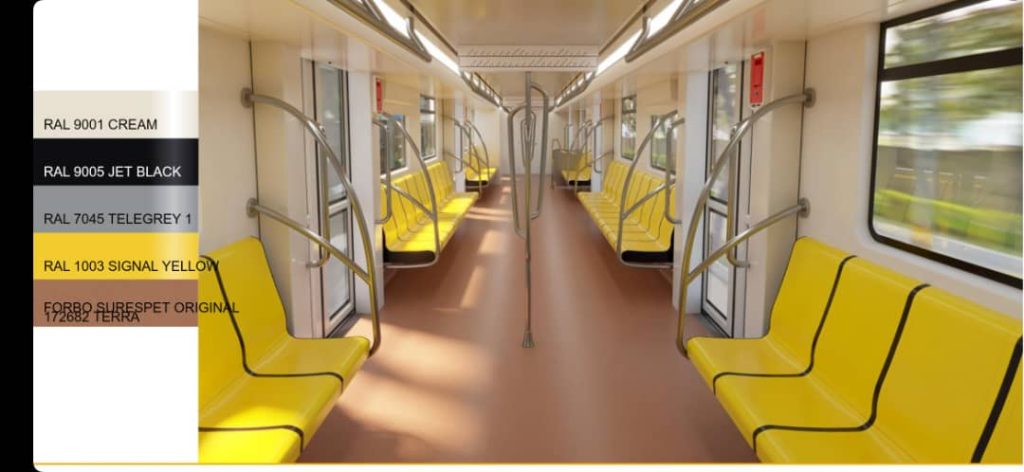After the completion of the Kampala-Namanve-Mukono stretch, Uganda Railways Corporation (URC) now eyes the Kampala-Port Bell line rehabilitation.
This will be followed by Kampala-Kyengera, whose feasibility study has been completed, according to the Head of Public Relations and Communications, John Linonn Sengendo.
URC has been implementing different projects since the acquisition of the 301 million-dollar (about 1.1 trillion shilling) loan by the African Development Bank (AfDB) by the government in 2022, and hopes there will not be a lag.
The mid-term plan of the corporation is to start on the Kyengera-Bujuuko line.
“Kampala-Kyengera will start soon, latest by next year,” says Sengendo, adding that real physical works will depend on how fast the government settles the people living along the railways.
“But when we start on the Kyengera-Bujuuko line, it will move faster because the way is there, and only the lines were taken. So in terms of construction, we are starting from scratch, not repairing.”
While this line will initially terminate at Bujuuko along the Kampala-Mityana road, there are long-term plans to extend it up to Kasese as it was originally.

The Kasese line is planned to be a Standard Gauge Railway (SGR) in the second phase, the first phase is the ongoing Malaba-Jinja SGR project.
“You see people talk about the SGR, but it is expensive, with a kilometre costing 9.8 to 10 million dollars to construct. That is money we cannot afford now,” Sengendo says.
The Malaba-Jinja SGR is still at the stage of acquiring land and residents in eight (8) out of the twelve (12) districts along the corridor have been compensated, however, the physical execution of the project will commence after securing funds.
According to the five-year strategy that starts next financial years, URC plans to acquire a rolling stock, which includes passenger coaches and cargo carriers, engines or locomotives and Diesel Multiple Units (DMU).
A DMU is a multiple-unit train powered by on-board diesel engines and does not require a separate locomotive, as the engines are incorporated into one or more of the carriages.
This should also see the cargo capacity rise from 30,000 to 100,000 tons per month, according to the plan
The Kampala-Kyengera and Kampala-Port Bell lines will be powered by four new engines, according to Sengendo, which should be by the end of next year, depending on the availing of the cash by the government and the handling of the encroachers’ questions.
On the modernisation of the railway network, Sengendo says they will continue deploying meter gauge railway lines (except with the SGR project) and diesel-powered trains, but which are more modern, with speeds of up to 120 kilometres an hour.
He says modernity, comfort, speed and general passenger experience has nothing to do with what type of engines are deployed.
“People think that Kenya is using electric trains, which is wrong. They actually are using diesel engines,” Sengendo says, adding that there are diesel engines which are new, modern and high tech.
URC is ordering new DMUs with unique specifications and hope that they will meet or exceed the expectations of Ugandans. Sengendo says the plan is to rebuild the stations into park-and-ride facilities to allow easy access to the stations.
Also in plan is a Kampala Light Rail Transit Network, according to Sengendo, which is expected to be implemented with development partners. Kampala is planned to have only roads, with no provisions for rail networks. Upgrading the city plan with light rail network will take time and requires resources.
After Namanve-Mukono, feasibility studies are underway for extension of both cargo and passenger service extensions to Lugazi, and later, Jinja, with implementation dependent on resource. Railway should be prioritised like the road sector.
On April 13, 2023, government through Ministry of Works and Transport and URC signed a contract with China Roads and Bridge Corporation to rehabilitate 382 kilometers of the Tororo – Gulu meter gauge railway line, and commissioning of works done later in August.
The railway line traverses through Mbale, Soroti, Lira before terminating at the Gulu Logistics Hub (GLH), a centre for facilitating of transportation collection, separation, consolidation and distribution of goods for national and international transit on a commercial basis.
The longer term plans of URC include the Kampala city light rail, which would be an intra-city service. However, the corporation says that this will not be easy to achieve because of the structure of settlement in Kampala.
“Kampala was designed for road transportation and not rail, so it will be hard, put the plans are there,” Sengendo said.


